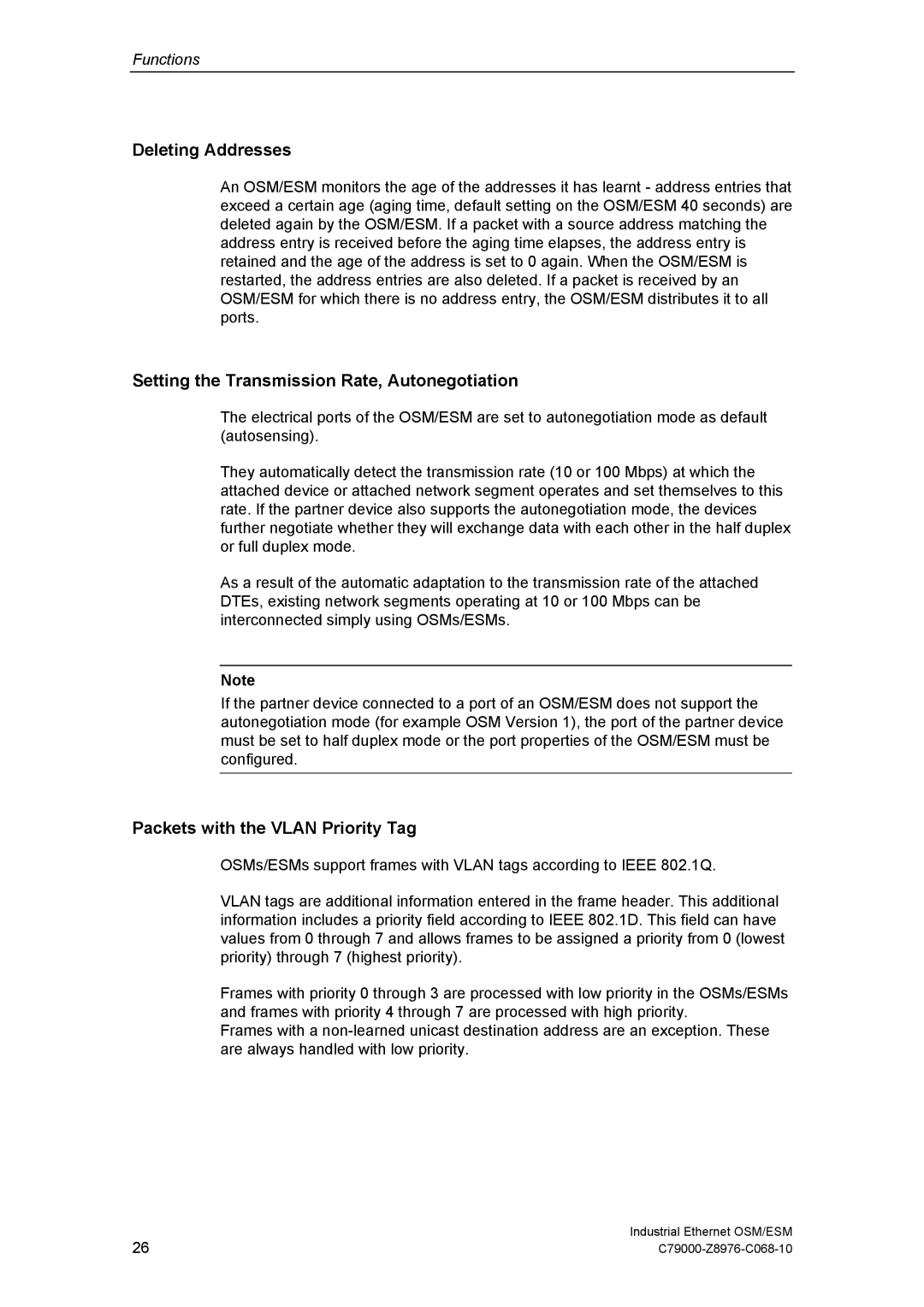
Functions
Deleting Addresses
An OSM/ESM monitors the age of the addresses it has learnt - address entries that exceed a certain age (aging time, default setting on the OSM/ESM 40 seconds) are deleted again by the OSM/ESM. If a packet with a source address matching the address entry is received before the aging time elapses, the address entry is retained and the age of the address is set to 0 again. When the OSM/ESM is restarted, the address entries are also deleted. If a packet is received by an OSM/ESM for which there is no address entry, the OSM/ESM distributes it to all ports.
Setting the Transmission Rate, Autonegotiation
The electrical ports of the OSM/ESM are set to autonegotiation mode as default (autosensing).
They automatically detect the transmission rate (10 or 100 Mbps) at which the attached device or attached network segment operates and set themselves to this rate. If the partner device also supports the autonegotiation mode, the devices further negotiate whether they will exchange data with each other in the half duplex or full duplex mode.
As a result of the automatic adaptation to the transmission rate of the attached DTEs, existing network segments operating at 10 or 100 Mbps can be interconnected simply using OSMs/ESMs.
Note
If the partner device connected to a port of an OSM/ESM does not support the autonegotiation mode (for example OSM Version 1), the port of the partner device must be set to half duplex mode or the port properties of the OSM/ESM must be configured.
Packets with the VLAN Priority Tag
OSMs/ESMs support frames with VLAN tags according to IEEE 802.1Q.
VLAN tags are additional information entered in the frame header. This additional information includes a priority field according to IEEE 802.1D. This field can have values from 0 through 7 and allows frames to be assigned a priority from 0 (lowest priority) through 7 (highest priority).
Frames with priority 0 through 3 are processed with low priority in the OSMs/ESMs and frames with priority 4 through 7 are processed with high priority.
Frames with a
26 | Industrial Ethernet OSM/ESM |
